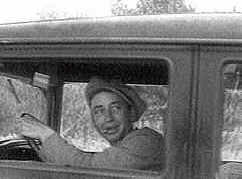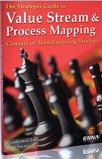1.0 Social System
1.1 There is no optimum organization.
As the environment, culture, people and technology change, so should the organization.
1.2 When selecting people for a
workgroup, strive for homogeneity in their backgrounds and work attitudes.
1.3 Reduce wide variations in knowledge
levels and variety through cross training.
1.4 Achieve High performance through
commitment rather than minimal compliance. Use more carrot than stick.
1.5 Build commitment by involving
people in the shaping of their future.
1.6 Provide opportunities to satisfy
unfulfilled higher order needs. Use the intrinsic motivators.
1.7 Adult learning occurs primarily
through experience. Integrate learning on the job through advisors, facilitators, and guided
application.
1.8 Maintain ability for normal
conversation between all members while at their workstations with compact layouts and noise
control.
2.0 Technical System
2.1 Control variances at their source.
2.2 Ensure that the detection of a
variance and the source of that variance occur in the same work group.
2.3 Maintain quality by detecting
variances in the process rather than in the final product.
2.4 Monitor inputs as carefully as
outputs.
2.5 Size work buffers large enough to
allow problem solving but small enough to prevent problem avoidance.
2.6 Match technological flexibility
with the product mix.
2.7 Match technology scale with
production volume of the work groups.
|
3.0 Integration
3.1 Design the Socio and
Technical systems simultaneously and jointly.
3.2 Give workers larger and more varied
tasks and increase cycle time.
3.3 Integrate support functions within
work groups to the largest possible extent.
3.4 Optimize the system rather than the
system's components.
3.5 Begin and end a work group's
technical boundary at a discontinuity in the material transformation process.
4.0 Managing The System
4.1 Allow teams to manage the daily
work.
4.2 Coach and facilitate rather than
supervise.
4.3 Coaches should manage the team
boundaries.
 4.4 Upper management should set goals,
supply resources and manage the culture. 4.4 Upper management should set goals,
supply resources and manage the culture.
|
 Al,
at the wheel, his face purposeful, his whole body listening to the car, his restless
eyes jumping from the road to the instrument panel. Al was one with his engine, every
nerve listening for weaknesses, for the thumps or squeals, hums and chatterings that
indicate a change that may cause a breakdown. He had become the soul of the car. Al,
at the wheel, his face purposeful, his whole body listening to the car, his restless
eyes jumping from the road to the instrument panel. Al was one with his engine, every
nerve listening for weaknesses, for the thumps or squeals, hums and chatterings that
indicate a change that may cause a breakdown. He had become the soul of the car.
John Steinbeck, "The Grapes of Wrath"
|
|





